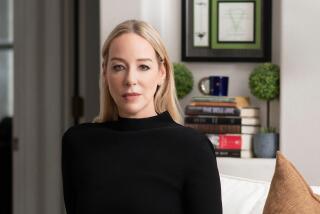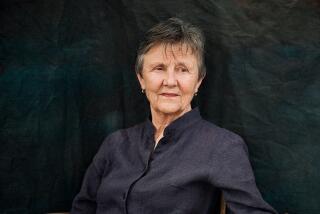Vivien Greene, 98; Wife of Novelist Was a Collector of Dollhouses
- Share via
Vivien Greene, who married novelist Graham Greene in 1927 and remained his wife until his death in 1991 despite their long separation and his later love affairs, died Tuesday at her home in Oxfordshire, England.
Greene, who was a notable authority and collector of dollhouses, was 98.
Graham Greene met Vivien Dayrell-Browning while he was a student at Oxford when -- as a recently converted Catholic -- she wrote to Greene complaining that he had erred in an article for the Oxford Outlook. He had referred to “worshiping” the Virgin Mary, and she told Greene that the proper term was “venerate,” or even more properly, “hyperdulia.”
Greene apologized and invited her to tea. When they met, he fell in love instantly, though she was less enamored.
Greene, who was a budding writer, pursued his reluctant inamorata with 1,000 love letters -- sometimes writing her several times a day.
According to Greene biographer Norman Sherry, the writer once wrote to her: “You carry magic with you always. It is in your eyes, & your voice, & your long hair, & your whiteness.” He called her his “Dear one, Darling, darling heart, marvelous wonderful, adorable one, Angel, Loveliest in the world, Sweetest Heart, Dear only love for ever, sweet one, old thing, dear desire.”
The onslaught of affectionate letters continued with little apparent effect until Greene finally agreed to convert to Catholicism to please her. At one point, he also offered a celibate relationship, although his resolve on that score faltered. The couple had two children, Lucy Caroline (known as Caroline) and Francis, who survive their mother.
Despite his ardor before their marriage, Greene seemed never to be faithful to his wife; much later in life, he told her that he had been with 32 other women.
The most important among those women -- “The Big Five,” as biographer Sherry called them -- were book illustrator Dorothy Glover; Lady Catherine Walston, a married woman with whom he had a long and torrid affair and to whom he dedicated one of his most notable novels, “The End of the Affair”; stage designer Jocelyn Rickards; Swedish actress Anita Bjork; and Yvonne Cloetta, who was also married.
Cloetta was with Greene the longest -- about 30 years -- and heard his last words before his death at the age of 86. Greene dedicated “Travels With My Aunt” to “HHK” -- his acronym for Cloetta, whom he called his “happy healthy kitten.”
According to some accounts, despite their separation in 1947, the affairs troubled Vivien Greene. In 2000, she was quoted in the Sunday Times of London as saying that she “often taunted” her husband by asking him if he didn’t mind whether Walston was unfaithful to him during their affair.
A few days after the article appeared, Ms. Greene wrote to the newspaper to clarify what she had said:
“I only once was so cruel as to say to my husband: ‘Don’t you mind that she sleeps with other men?’ He reddened to his forehead and replied: ‘I have other women. Why shouldn’t she have other men?’ There was no replying to this pathetic loyalty.”
She added, again referring to Walston, “Beyond admiring her beautiful American clothes and jewelry, when we were all in rationed utilities, I did not even refer to her.”
Some say that Vivien Greene offered her husband a divorce. Whether true or not, Greene remained married to her and also funded her doll museum at Iffley in Oxford.
Vivien Greene wrote books on dollhouses, including “English Dolls’ Houses of the 18th and 19th Centuries” (1955).
Her love of dolls and dollhouses seemed to stem from a desire for stability. As a child, her family was always on the move, and she said she “grew to hate the impermanence of our life and to long above all for a settled home.” She once said that the dollhouses allowed her to create “entire families, scenarios and worlds.”
“My talent was for nest-building,” she said in an interview published in the Guardian of London. “But that was the last thing he” -- her husband -- “wanted.”
At age 94, she sold most of her collection of dollhouses, which was considered the finest of its kind, for more than $300,000. Among them was “The Belgravia,” a 150-year-old dollhouse she bought after a Greene family home was blitzed during World War II.
The novelist left his estate to her and their children, which concerned some of Cloetta’s friends, who believed she deserved something for her many years of loyalty.
The Guardian of London described Graham Greene’s funeral in Switzerland in April 1991:
“In what might have been a scene from ‘The End of the Affair,’ a tearful, veiled 86-year-old Vivien Greene threw a single flower onto his coffin. Nearby, in the small cemetery at the foot of the vine-covered slopes overlooking Lake Geneva, stood the elegant, frail figure of silver-haired Yvonne Cloetta.”
More to Read
Sign up for our Book Club newsletter
Get the latest news, events and more from the Los Angeles Times Book Club, and help us get L.A. reading and talking.
You may occasionally receive promotional content from the Los Angeles Times.










